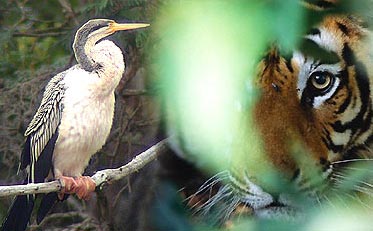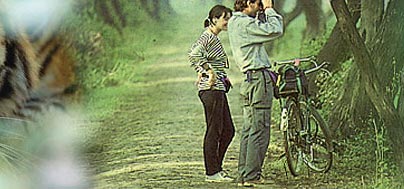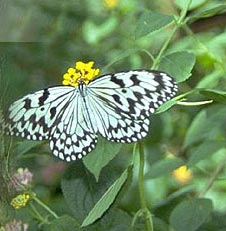 |
 |
 |
||
|
||||
Wild Expeditions India
-------------------------------------------------------------------------------------------------------------------------------------------------------------------------------------------------
Wild Expeditions India
Corbett National Park ¤ Historical Background ¤ Habitat ¤ Map of Corbett National Park
Mammals Checklist ¤ Reptiles Checklist ¤ Birds Checklist ¤ Wildlife Information
Wildlife Watching ¤ Conservation ¤ Tours with Corbett
-------------------------------------------------------------------------------------------------------------------------------------------------------------------------------------------------
Wild Expeditions India
Corbett National Park ¤ Historical Background ¤ Habitat ¤ Map of Corbett National Park
Mammals Checklist ¤ Reptiles Checklist ¤ Birds Checklist ¤ Wildlife Information
Wildlife Watching ¤ Conservation ¤ Tours with Corbett
-------------------------------------------------------------------------------------------------------------------------------------------------------------------------------------------------
Historical Background of Corbett National Park
The Ramganga valley once supported an ancient, relatively unstudied civilisation.
Vestiges of their existence can be seen in the form of terra cotta remains and
temple ruins that lie along the river. The community seems to have been a farming
one that had worked hard at clearing parts of the jungle for agriculture. But
theirs seemed to be a losing battle against a forest that would cyclically reclaim
its lands. Sal Shorea robusta forests once grew all the way from Punjab to Assam.
But humans encroached the jungles, and by the time Jim Corbett arrived on the
scene, most of these forests had already been cleared. Nevertheless, this was
still a favourite shikar area and many animal trophies that decorated the walls
of British soldiers and officers in North India came from these parts. Timber
to feed the insatiable demands of the British government also came from here
and it was only when Major Ramsay, a British officer with vision and sensitivity,
called a halt to the destruction that the combined havoc of cultivation, grazing
and timberfelling came to an end.
civilisation.
Vestiges of their existence can be seen in the form of terra cotta remains and
temple ruins that lie along the river. The community seems to have been a farming
one that had worked hard at clearing parts of the jungle for agriculture. But
theirs seemed to be a losing battle against a forest that would cyclically reclaim
its lands. Sal Shorea robusta forests once grew all the way from Punjab to Assam.
But humans encroached the jungles, and by the time Jim Corbett arrived on the
scene, most of these forests had already been cleared. Nevertheless, this was
still a favourite shikar area and many animal trophies that decorated the walls
of British soldiers and officers in North India came from these parts. Timber
to feed the insatiable demands of the British government also came from here
and it was only when Major Ramsay, a British officer with vision and sensitivity,
called a halt to the destruction that the combined havoc of cultivation, grazing
and timberfelling came to an end.Years later, E.A. Smythies of the Imperial Forest Service tentatively
 proposed
the declaration of the area as a National Park, and in 1936, it was finally
notified as the Hailey National Park, named after Governor Hailey of the United
Provinces. After India gained her Independence from the British, the name was
changed to Ramganga National Park in 1952. In 1957, officers and locals who
knew just what a major role Jim Corbett had played in protecting the forest,
marking its boundaries and championing the protection of the animals of the
Ramganga, asked for it to be renamed after the legendary hunter-conservationist.
Many of Jim Corbett's enthralling tales, including the Maneaters of Kumaon and
the Maneating Leopard of Rudraprayag originated in these famous Kumaon hills,
where the shikari used to hunt wild animals, until F. W. Champion, who pioneered
wildlife photography in India, taught him to appreciate living tigers.
proposed
the declaration of the area as a National Park, and in 1936, it was finally
notified as the Hailey National Park, named after Governor Hailey of the United
Provinces. After India gained her Independence from the British, the name was
changed to Ramganga National Park in 1952. In 1957, officers and locals who
knew just what a major role Jim Corbett had played in protecting the forest,
marking its boundaries and championing the protection of the animals of the
Ramganga, asked for it to be renamed after the legendary hunter-conservationist.
Many of Jim Corbett's enthralling tales, including the Maneaters of Kumaon and
the Maneating Leopard of Rudraprayag originated in these famous Kumaon hills,
where the shikari used to hunt wild animals, until F. W. Champion, who pioneered
wildlife photography in India, taught him to appreciate living tigers. Eventually Gentleman Jim put his guns down in favour of the camera; and that is the example that all humans who venture into this magnificent Park must now emulate. The forest was re-christened the Corbett National Park in 1957. By the 1970s it was apparent that the tiger was in trouble and that less than 2,000 animals survived in the wild. Project Tiger was thus set up in April 1973 to protect the tiger and its habitat. Appropriately, the Corbett Tiger Reserve was the location for the launch of Project Tiger.
| Home | About Us | FAQ's | Contact Us | Commendations | Reservation |
| Copyright © Wildlife India Plus ( All Rights Reserved. ) | Web Development & SEO Services by |

